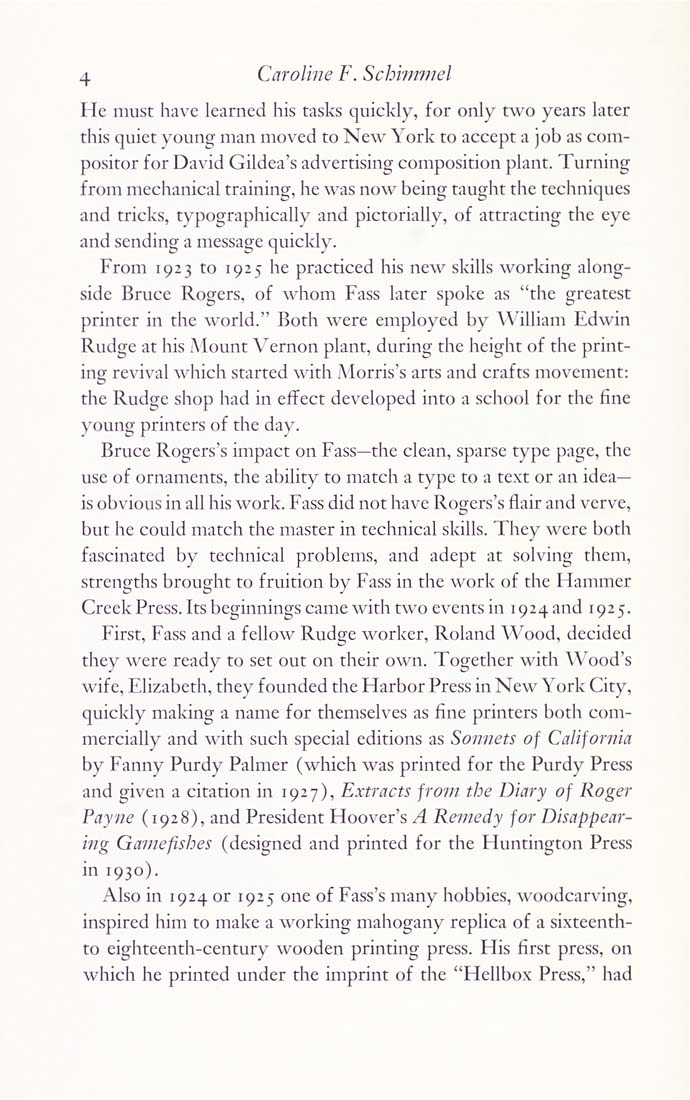Columbia Library columns (v.28(1978Nov-1979May))
(New York : Friends of the Columbia Libraries. )
|
||
|
|
|
|
| v.28,no.1(1978:Nov): Page 4 |

4 Caroline F. Schimmel He must have learned his tasks quickly, for only two years later this quiet young man moved to New York to accept a job as com¬ positor for David Gildea's advertising composition plant. Turning from mechanical training, he was now being taught the techniques and tricks, typographically and pictorially, of attracting the eye and sending a message quickly. From 1923 to 1925 he practiced his new skills working along¬ side Bruce Rogers, of whom Fass later spoke as "the greatest printer in the world." Both were employed by William Edwin Rudge at his Mount Vernon plant, during the height of the print¬ ing revival which started with Morris's arts and crafts movement: the Rudge shop had in effect developed into a school for the fine young printers of the day. Bruce Rogers's impact on Fass—the clean, sparse type page, the use of ornaments, the ability to match a type to a text or an idea¬ ls obvious in all his work. Fass did not have Rogers's flair and verve, but he could match the master in technical skills. They were both fascinated bv technical problems, and adept at solving them, strengths brought to fruition by Fass in the work of the Hammer Creek Press. Its beginnings came with two events in 1924 and 1925. First, Fass and a fellow Rudge worker, Roland Wood, decided they were ready to set out on their own. Together with Wood's wife, Elizabeth, they founded the Harbor Press in New York City, quickly making a name for themselves as fine printers both com¬ mercially and with such special editions as Sonnets of California by Fanny Purdy Palmer (which was printed for the Purdy Press and given a citation in 1927), Extracts from the Diary of Roger Payne (1928), and President Hoover's A Remedy for Disappear¬ ing Gamefishes (designed and printed for the Huntington Press in 1930). Also in 1924 or 1925 one of Fass's many hobbies, woodcarying, inspired him to make a working mahogany replica of a sixteenth- to eighteenth-century wooden printing press. His first press, on which he printed under the imprint of the "Hellbox Press," had |
| v.28,no.1(1978:Nov): Page 4 |







